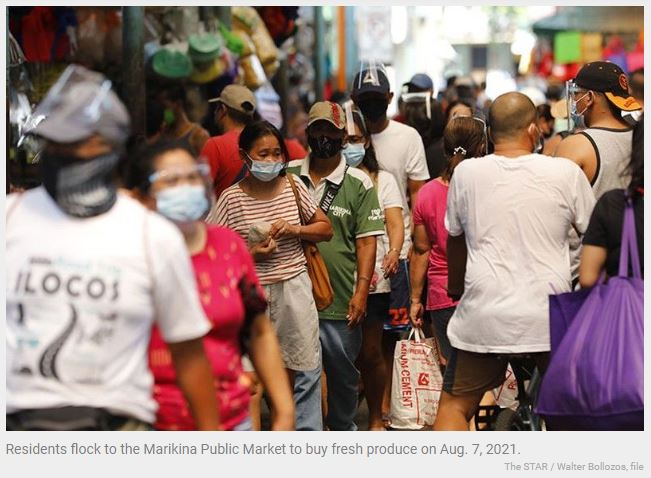Philippines: Inflation sizzles to 6.4% in July, putting pressure on households, interest rates
MANILA, Philippines (Update 1, 11:08 a.m.) — Inflation remained painfully high in July, keeping the pressure on the Bangko Sentral ng Pilipinas to stay hawkish as rising prices squeeze Filipino households’ budgets.
Inflation, as measured by the Consumer Price Index (CPI), accelerated 6.4% year-on-year in July, faster than 6.1% recorded in June, the Philippine Statistics Authority reported Friday. It matched the upper-limit of the BSP’s 5.6-6.4% forecast range for July.
Based on 2018 prices, the latest CPI reading is the hottest since October 2018, when inflation sizzled to 6.9% amid a rice supply shortage and currency slump at the time. In the first 7 months of 2022, inflation averaged 4.7%, dashing any further chances of meeting the government’s 2-4% annual target.
National Statistician Claire Dennis Mapa explained that food inflation, which jumped 6.9% year-on-year, accounted for 64% of the overall uptrend last month. Higher prices of fish (particularly tilapia), chicken and sugar were the main drivers of food inflation during the month.
Meanwhile, transport inflation quickened at an annualized rate of 18.1% in July and was the second largest contributor to the overall increase in consumer prices. Mapa explained the PSA recorded more expensive fares for jeepney rides, as well as sea and air travels.
The bad news, Mapa said, is that inflation has yet to peak based on PSA data. Take, for instance, the restaurants and accommodation services, which is among the commodity groups that usually raise their prices belatedly because of their slow reaction to rising input costs. Data showed this segment emerged as the third main source of inflation last month after sharply quickening to 3.4%, from 2.8% in June.
Reacting to the latest inflation data, BSP Governor Felipe Medalla said in a statement that the central bank is aware of the ongoing “second-round effects” of inflation, which happen when price pressures from the supply side, such as higher oil prices, remain persistent leading to increase in prices and wages in the country that affect demand.
The BSP chief also noted the “elevated” inflation expectations, meaning more and more Filipinos are predicting prices to go higher in the coming months. Such a development could become a big headache for the BSP, especially if people start calling for bigger wages to cover the anticipated increase in prices. This, in turn, may force businesses to increase their selling prices from time to time to offset the costs of pay hikes, potentially creating a dangerous cycle of rapid inflation that would be harder to control.
“The BSP is prepared to take all necessary policy action to bring inflation toward a target-consistent path over the medium term and deliver on its primary mandate of price stability,” Medalla said.
For Nicholas Mapa, senior economist at ING Bank in Manila, the second-round effects just started to kick in, adding that this “should keep the BSP hawkish in the coming months”. Medalla earlier said there’s still a possibility that the BSP would hike rates in August even after the surprise 75-basis point increase last month.
“Recent wage hikes and transport fare adjustments continue to feed through to the rest of the CPI basket. Bread manufacturers and retail outlets have announced price increases in the past month, indicating that inflation has hit more than just energy and imported food items. The emergence of these second round effects suggests that price pressures are more pervasive,” Mapa said in an e-mailed commentary.
Source: https://www.philstar.com/business/2022/08/05/2200498/inflation-sizzles-64-july-putting-pressure-households-interest-rates


 English
English




